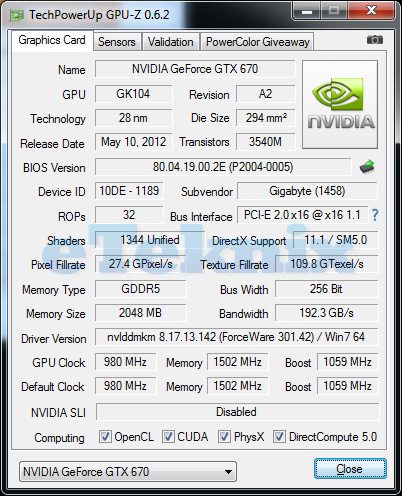Gigabyte GTX 670 Windforce 3X OC 2GB Graphics Card Review
Andy Ruffell / 12 years ago
Taking a first glance look at the card, we can see a much larger than reference design due to the patented Windforce 3X cooler that we’ve seen on other cards from Gigabyte in the past. The model number sits just above the PCI-Express connector, though this is the only branding on the card that it’s a GTX 670 as the GTX 680 Windforce 3X looks exactly the same.
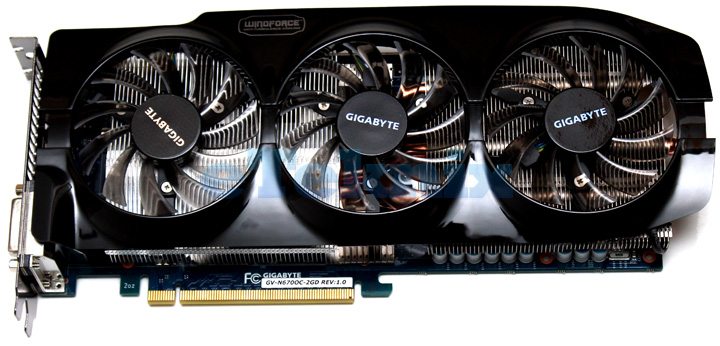
The cooler is known as the Windforce 3X, and that’s down to the three large Gigabyte branded fans with translucent fins that sit above a large two-part heatsink combination.
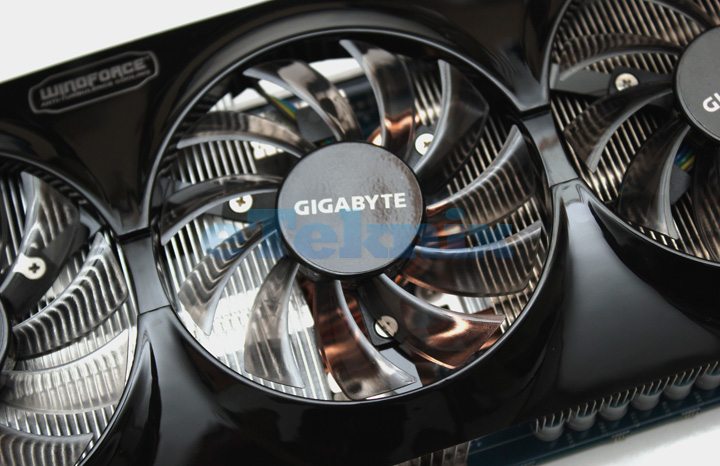
The two aluminium heatsinks are joined by three large copper heatpipes and pass from one end of the card to the other.

Flipping the card around we see a large metal bracket that spans across the top of the card to give extra support to the PCB due to the weight of the cooler.

Moving towards the end of the card we see that the typical two 6-pin PCIe connectors have had a slight change and instead now see a single 6-pin and a single 8-pin power connector. With the overclock present out of the factory, extra power is needed from the 8-pin connector.
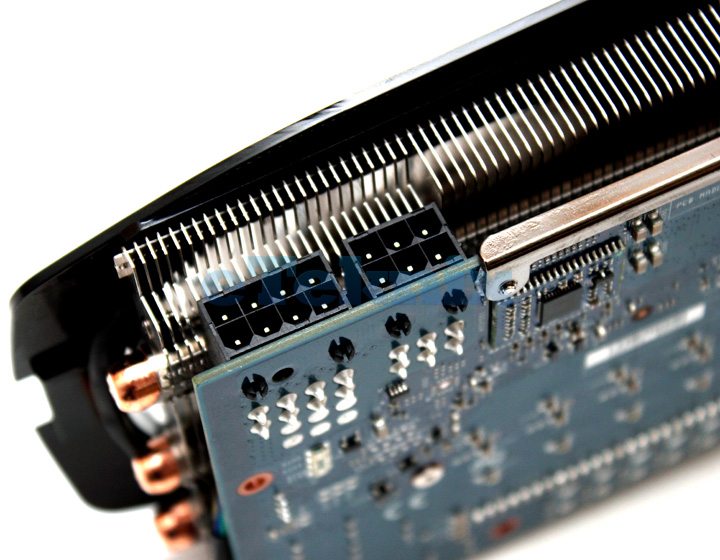
Towards the end of the card we find two Nvidia SLI fingers for those wanting to get some serious multi-GPU action to give the best performance in gaming.
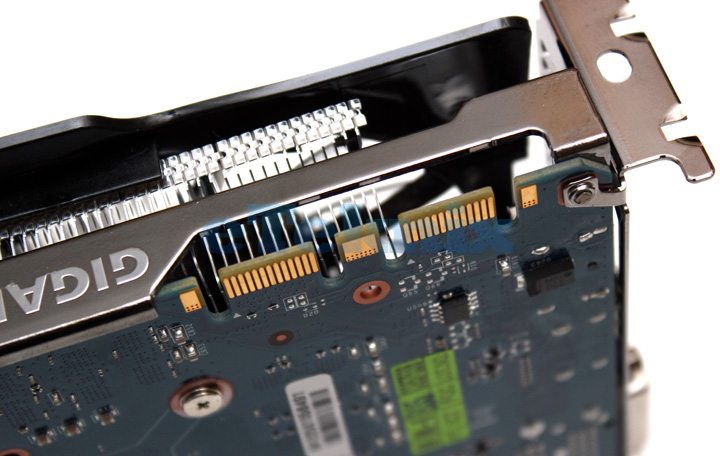
Taking a look at the display outputs on this card, we see the same configuration as with a reference GTX 670 with a DVI-I and DVI-D connector, HDMI and full-size DisplayPort. Being a GTX 670, we also have the ability for Nvidia surround for up to four displays with just a singular card.
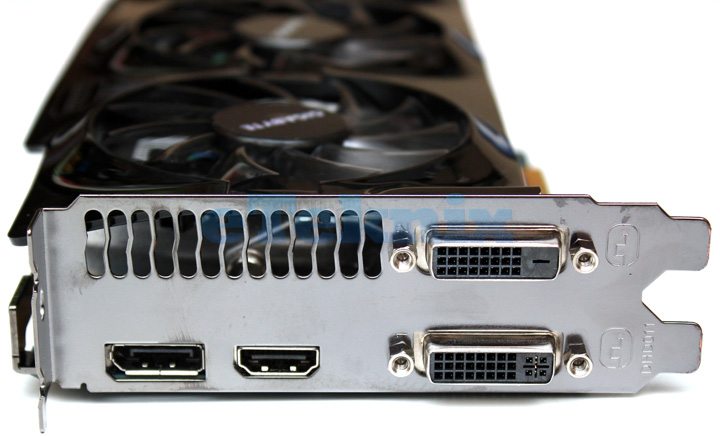
Finishing our look at the card, we decide to take a look at the specifications in GPU-Z, especially when compared to a stock GTX 670 graphics card to see how far the clock speeds have been increased. A stock GTX 670 has a reference speed of 915MHz with a memory speed of 1502MHz (6Gbps Effective), whereas this card has had its clock speed increased to 980MHz, in turn increasing the boost speed from 980MHz to 1059MHz. The memory clock speed has remained the same at 1502MHz however.
